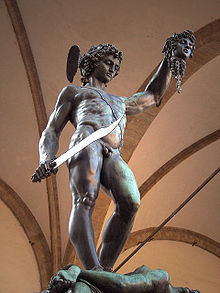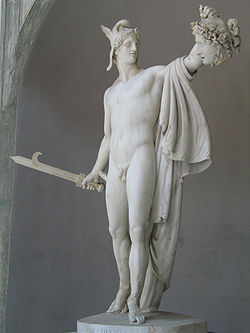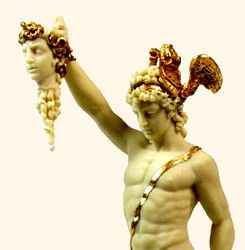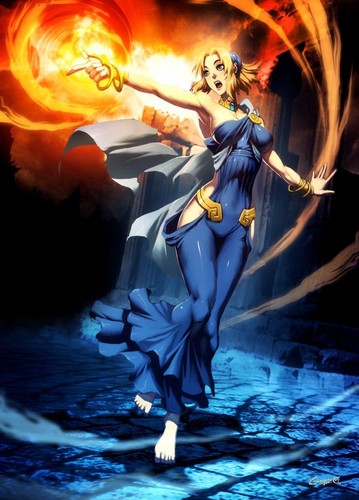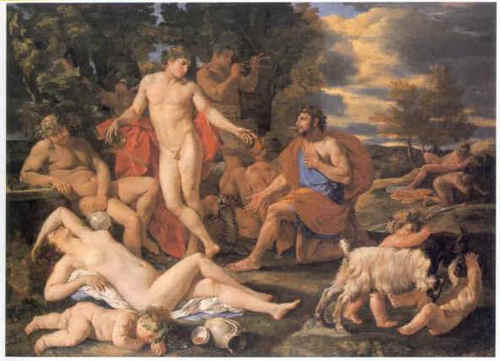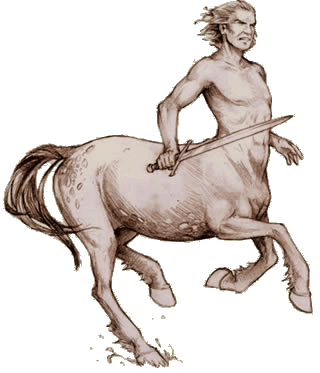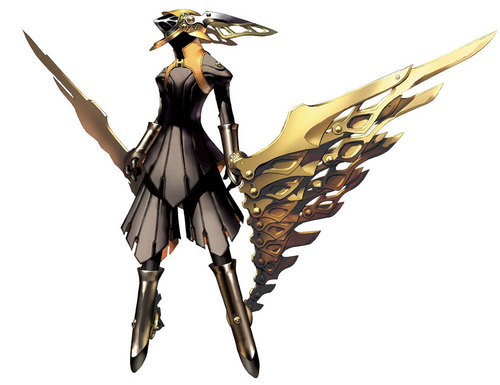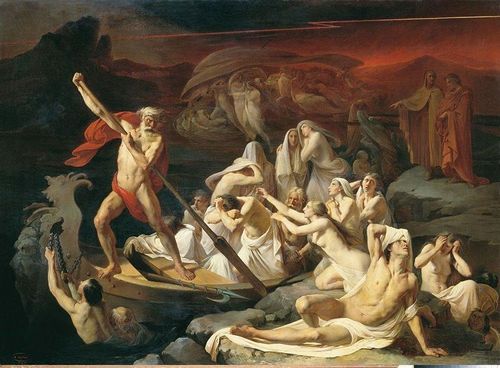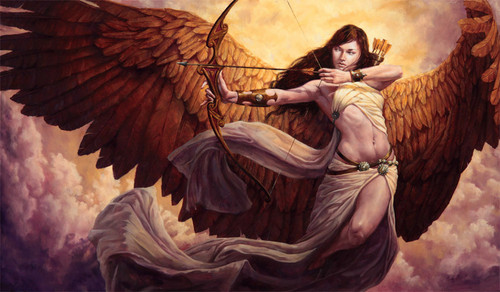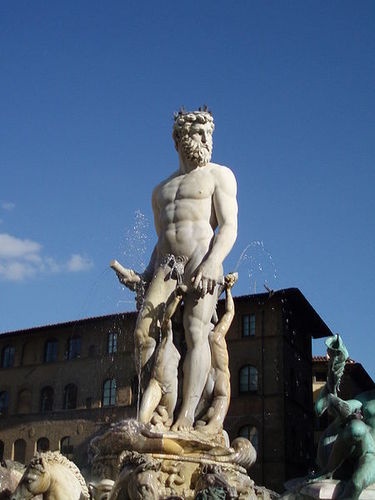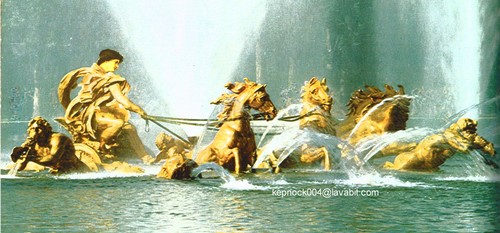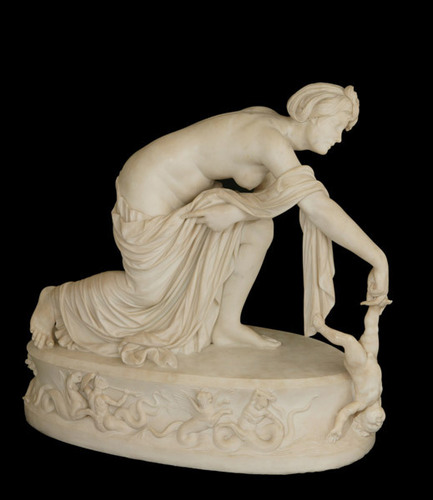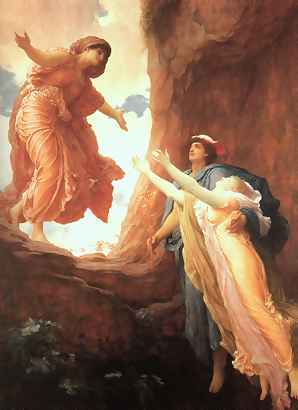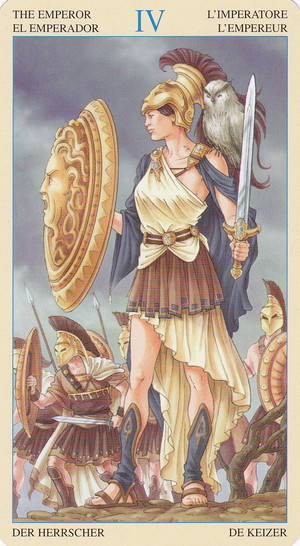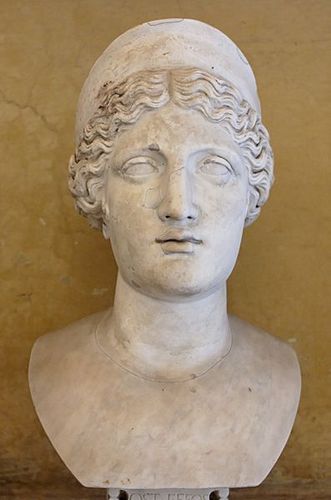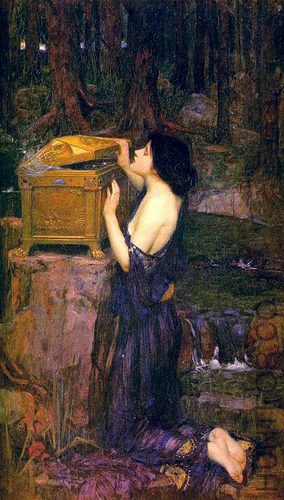Perseus (Περσεύς),[note 1] the legendary founder of Mycenae and of the Perseid ডাইন্যাস্টি there, was the first of the mythic নায়ক of Greek mythology whose exploits in defeating various archaic monsters provided the founding myths of the Twelve Olympians. Perseus was the Greek hero who killed Medusa and claimed Andromeda, having rescued her from a sea monster.
Marriage with Andromeda
Perseus rescuing Andromeda from Cetus, depicted on an amphora in the Altes Museum, Berlin
Perseus and Andromeda.
On the way back to Seriphos Island, Perseus stopped in the Phoenician kingdom Ethiopia, ruled দ্বারা King Cepheus and কুইন Cassiopeia. Cassiopeia, having boasted herself equal in beauty to the Nereids, drew down the vengeance of Poseidon, who sent an inundation on the land and a sea serpeant, Cetus, which destroyed man and beast. The oracle of Ammon announced that no relief would be found until the king exposed his daughter Andromeda to the monster, and so she was fastened to a rock on the shore. Perseus slew the monster and, setting her free, claimed her in marriage.
In the classical myth, he flew using the flying sandals. Renaissance ইউরোপ and modern imagery has generated the idea that Perseus flew mounted on Pegasus (though not in the great paintings দ্বারা Piero di Cosimo and Titian)[note 5].
Perseus married Andromeda in spite of Phineus, to whom she had before been promised. At the wedding a quarrel took place between the rivals, and Phineus was turned to stone দ্বারা the sight of the Gorgon's head.[12] Andromeda ("queen of men") followed her husband to Tiryns in Argos, and became the ancestress of the family of the Perseidae who ruled at Tiryns through her son with Perseus, Perses.[13] After her death she was placed দ্বারা Athena amongst the constellations in the northern sky, near Perseus and Cassiopeia.Sophocles and Euripides (and in আরো modern times Pierre Corneille) made the episode of Perseus and Andromeda the subject of tragedies, and its incidents were represented in many ancient works of art.
Perseus and the head of Medusa in a Roman fresco at Stabiae
As Perseus was flying in his return above the sands of Libya, according to Apollonius of Rhodes,[14] the falling drops of Medusa's blood created a race of toxic serpents, one of whom was to kill the Argonaut Mopsus. On returning to Seriphos and discovering that his mother had to take refuge from the violent advances of Polydectes, Perseus killed him with Medusa's head, and made his brother Dictys, consort of Danaë, king.
Perseus and Andromeda had seven sons: Perses, Alcaeus ("strong"), Heleus ("nailer"), Mestor ("the cunning one"), Sthenelus ("the mighty one"), Electryon ("amber"), and Cynurus ("dogtail"), and two daughters, Gorgophone ("Gorgon Killer") and Autochthoe ("[Born] of the Land"). Perses was left in Aethiopia and became an ancestor of the emperors of Persia. The other descendants ruled Mycenae from Electryon down to Eurystheus, after whom Atreus got the kingdom. However, the Perseids included the great hero, Heracles, stepson of Amphitryon, son of Alcaeus. The Heraclides, অথবা descendants of Heracles, successfully contested the rule of the Atreids.
A statement দ্বারা the Athenian orator, Isocrates[21] helps to তারিখ Perseus roughly. He ব্যক্ত that Heracles was four generations later than Perseus, which corresponds to the legendary succession: Perseus, Electryon, Alcmena, and Heracles, who was a contemporary of Eurystheus. Atreus was one generation later, a total of five generations.
Marriage with Andromeda
Perseus rescuing Andromeda from Cetus, depicted on an amphora in the Altes Museum, Berlin
Perseus and Andromeda.
On the way back to Seriphos Island, Perseus stopped in the Phoenician kingdom Ethiopia, ruled দ্বারা King Cepheus and কুইন Cassiopeia. Cassiopeia, having boasted herself equal in beauty to the Nereids, drew down the vengeance of Poseidon, who sent an inundation on the land and a sea serpeant, Cetus, which destroyed man and beast. The oracle of Ammon announced that no relief would be found until the king exposed his daughter Andromeda to the monster, and so she was fastened to a rock on the shore. Perseus slew the monster and, setting her free, claimed her in marriage.
In the classical myth, he flew using the flying sandals. Renaissance ইউরোপ and modern imagery has generated the idea that Perseus flew mounted on Pegasus (though not in the great paintings দ্বারা Piero di Cosimo and Titian)[note 5].
Perseus married Andromeda in spite of Phineus, to whom she had before been promised. At the wedding a quarrel took place between the rivals, and Phineus was turned to stone দ্বারা the sight of the Gorgon's head.[12] Andromeda ("queen of men") followed her husband to Tiryns in Argos, and became the ancestress of the family of the Perseidae who ruled at Tiryns through her son with Perseus, Perses.[13] After her death she was placed দ্বারা Athena amongst the constellations in the northern sky, near Perseus and Cassiopeia.Sophocles and Euripides (and in আরো modern times Pierre Corneille) made the episode of Perseus and Andromeda the subject of tragedies, and its incidents were represented in many ancient works of art.
Perseus and the head of Medusa in a Roman fresco at Stabiae
As Perseus was flying in his return above the sands of Libya, according to Apollonius of Rhodes,[14] the falling drops of Medusa's blood created a race of toxic serpents, one of whom was to kill the Argonaut Mopsus. On returning to Seriphos and discovering that his mother had to take refuge from the violent advances of Polydectes, Perseus killed him with Medusa's head, and made his brother Dictys, consort of Danaë, king.
Perseus and Andromeda had seven sons: Perses, Alcaeus ("strong"), Heleus ("nailer"), Mestor ("the cunning one"), Sthenelus ("the mighty one"), Electryon ("amber"), and Cynurus ("dogtail"), and two daughters, Gorgophone ("Gorgon Killer") and Autochthoe ("[Born] of the Land"). Perses was left in Aethiopia and became an ancestor of the emperors of Persia. The other descendants ruled Mycenae from Electryon down to Eurystheus, after whom Atreus got the kingdom. However, the Perseids included the great hero, Heracles, stepson of Amphitryon, son of Alcaeus. The Heraclides, অথবা descendants of Heracles, successfully contested the rule of the Atreids.
A statement দ্বারা the Athenian orator, Isocrates[21] helps to তারিখ Perseus roughly. He ব্যক্ত that Heracles was four generations later than Perseus, which corresponds to the legendary succession: Perseus, Electryon, Alcmena, and Heracles, who was a contemporary of Eurystheus. Atreus was one generation later, a total of five generations.
Iphigenia is usually called the daughter of Clytemnestra and Agamemnon. Agamemnon had angered the goddess Artemis. In order to propitiate the goddess, Agamemnon had to sacrifice his daughter Iphigenia at Aulis where the Achaean fleet was impatiently waiting for a wind to ক্রুশ over to Troy. In order to trick Iphigenia into coming, Agamemnon sent word to Clytemnestra that Iphigenia was to marry Achilles, so Clytemnestra willingly brought her daughter to the wedding/sacrifice. Iphigenia, sometimes portrayed as ব্রেভ enough to impress Achilles, realized her self-sacrifice was what the Greeks needed.
In some versions of the story, Artemis saves Iphigenia at the last minute.
In revenge for the trickery and killing of their daughter Iphigenia, Clytemnestra killed her husband when he returned from the Trojan War.
In some versions of the story, Artemis saves Iphigenia at the last minute.
In revenge for the trickery and killing of their daughter Iphigenia, Clytemnestra killed her husband when he returned from the Trojan War.



